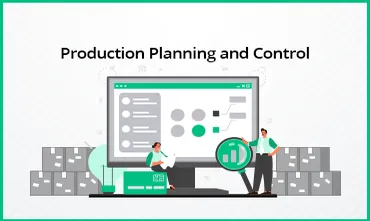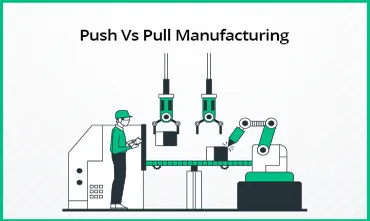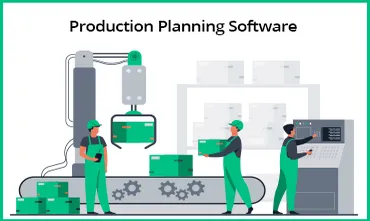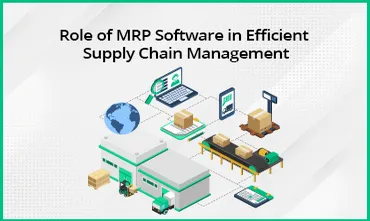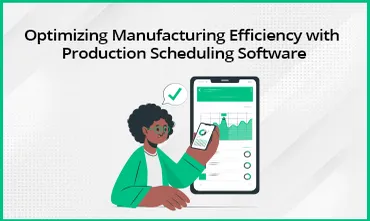A subcontract is commonly used in the manufacturing, construction, and information technology industries, among others. It is an excellent tool to reduce costs, improve quality, and optimize efficiency by hiring an expert to work with you on one or more short-term projects.
One of the earliest challenges encountered by a growing SME is to scale the business by keeping costs in control. This is when the power of subcontracting comes to the rescue.
In this article, we'll discuss all things subcontracting, the benefits of subcontracting, the different types, and the difference between outsourcing and subcontracting. Read on to understand more about it.
What Is Subcontracting?
Subcontracting is the practice of assigning part of the responsibilities or requirements of a contract to another party. This can be done for a variety of reasons; to save time or money, or to access specialized skills, expertise, or equipment that is unavailable in-house. It may also be undertaken to improve the overall quality of the project.
Sub-contract work is common in both small and large companies where complicated projects are the norm. There are many functions that small businesses may outsource to subcontractors, like parts of manufacturing processes, preparing payroll, or handling tax compliance.
Specifically in the manufacturing industry, for instance, when manufacturers require a single subpart of a product to be manufactured or need a minor task completed, they usually hire a contractor. This contractor then performs the task under a contract for a predetermined fee.
For example, if a manufacturer produces pens, and does not have the required equipment for printing the pen labels, he may choose to outsource the service of printing to a contractor.
Subcontractors are also known as independent contractors, vendors, or freelance employees. Here it's important to note that subcontractors are not full-time employees of the company.
Therefore, you do not manage or oversee them, give them detailed instructions on how to do their tasks, or exercise line management authority over them.
Read Also - What Is ERP Inventory Management? | Best ERP Inventory Management Software In 2023
How Does Subcontracting Work?
In most cases of subcontract manufacturing, the original contract is between a client and a contractor. This general project contractor is responsible for completing the project or providing the services specified in the contract, within its predetermined constraints.
However, the main contractor may choose to subcontract some or all of the work to another party for a fee, known as a subcontractor. The subcontractor is then responsible for completing the tasks or requirements assigned to them by the contractor, according to the terms of the subcontract.
This may include activities like providing materials, labor, or other services, depending on the nature of the project. The subcontractor is paid for their work by the contractor, who in turn is paid by the client according to the terms of the original contract. Typically, the subcontractor is not directly involved with the client and the contractor, and their work is only overseen by the contractor. Fees for a subcontracting process are often calculated by the number of hours it takes to perform a task. Depending on the terms of their agreement with the prime contractor, subcontractors may receive payment at a flat rate for their work.
Read Also - Ultimate Guide about Payment Reminder for SMEs
Why Subcontracting?
There are many value-adding reasons for entering into a subcontract. A subcontract order is an excellent option when a project's essential skills are too diverse to be handled by the business itself or by one general contractor. The general contractor may also be able to reduce overall project risks and costs by subcontracting project components that fall outside their core skills.
It may also happen that you have a major government contract or contract with a significant impact on a local community. In this case, too, you may require the main contractor to hire a specific number of local subcontractors.
Subcontract manufacturing by using the services of subcontractors or freelancers, lowers the total cost incurred by a company, that it would incur otherwise, by employing a full-time worker.
Since contractors do not fall under the list of permanent employees of your business, you are not responsible for their compensation benefits. You also need not worry about other employee costs such as car and general liability insurance, health insurance, full-time wages, or taxes.
Read Also - Benefits of Vendor-Managed Inventory
Benefits of Subcontracting
Subcontracting can assist you to outsource certain processes, relieve your workload and help you to run your business smoothly. Here are the key benefits of subcontracting:
Increased focus on core business functions
The process of subcontracting in operations management allows you to delegate time-consuming tasks to those capable of completing them efficiently. Additionally, it allows you to focus on more specialized and complex jobs that need your attention and supervision internally.
Better use of existing resources
It might get challenging and tricky for your business if you try to multitask and expect your staff to excel in all operations in-house. You might lose important time on lengthy and unimportant activities, and you may also end up using more resources than required. By delegating certain tasks to other contractors who specialize in that particular segment, you can ensure that your existing in-house resources are used more efficiently and in the areas that are more value-adding.
Read Also - What Is Demand Forecasting?
Reduces capital expenditure
When you assign certain tasks as subcontracts, you don't need to purchase all the equipment and material required to complete those processes. This reduces capital expenditures to a great extent.
In addition, as discussed above, you can also save on full-time employee benefits and vacation time. Moreover, subcontractors are responsible for their own time schedules and do not require your supervision. This is an important area of value, as this saves precious business time for you and your team.
Flexible contract duration
You are bound to a contract only for a limited period of time. Based on the contract terms, you can terminate the subcontract if you're unsatisfied with the work. Closure terms for subcontract manufacturing are relatively simple compared to the closure terms for full-time employees.
Read Also - Which Software Is Recommended For Inventory Management?
Types of Subcontracting
Here is a list of the types of subcontracting in operations management for your reference, each with a brief description:
Architecture and Construction
The construction industry heavily relies on subcontracting. To do most of the work, prime contractors look out for subcontractors who have expertise in different domains. This includes electronics subcontracting, plumbers, carpenters, carpet layers, painters, landscapers, roofers, and flooring specialists.
Food and Beverage Services
Usually, companies operating in the food and beverage sector, such as event planners or caterers do not have full-time event staff. Based on the event, a full-service restaurant or banquet hall may hire contractual bakers, pastry chefs, or other staff, to provide inventory or service for a specific event.
Marketing and Communications
In many advertising, public relations, sponsorship, and promotion campaigns, subcontractors are leveraged to handle editorial, layout, design, printing, video, website, and distribution tasks.
Technology Industry
Businesses hire technology consultants to set up computers, create company networks, maintain equipment, systems, and servers, develop websites, and troubleshoot ongoing problems.
In addition to these primary requirements, contractors may also be hired for business automation, deep technology, or customized software requirements.
Administrative Services
Companies that offer services in accounting and bookkeeping, human resources, benefits and compensation, tax preparation, payroll, and marketing frequently farm out administrative chores to external vendors.
Read Also - The Ultimate Guide to Purchase Requisition
Subcontracting Process
Onboarding a subcontractor for the first time can seem complex, especially without the support of a trusted vendor or software.
The subcontract work processes listed below will give you a head start:
Assess your needs
It is critical to evaluate your company's needs to assess the scope and requirement of external assistance. Next, you must choose which specific jobs or projects to outsource, and select what kind of subcontractor would be most effective.
Inform and prepare your staff
When it comes to the involvement of new sub-contractors, businesses may face resistance from workers who are unwilling to coordinate with external job workers. Therefore, get your in-house workers onboard about the plans to outsource work and inform them of the reasons for it.
This step is also essential to get inputs on which tasks can be delegated to third parties. It will ensure that workers feel a part of the process and are updated with all current and upcoming tasks.
Contact prospective subcontractors
This stage involves reaching out and connecting with prospective subcontractors, formally or informally, and inquiring about the services rendered and contract terms. Before finalizing a subcontractor, all details should be discussed clearly like inclusions of the project, duration, payment rate and terms, and other clauses.
Negotiate a contract
After choosing a subcontractor, it's time for you to negotiate a contract to establish a successful working relationship. The intent and goals of both parties from this subcontract should be evaluated through a set of questions.
The document will list the financial incentives that a subcontractor will receive upon completing the project and explicitly specify roles and performance standards.
You should also outline who will control the rights to any new concepts, innovations, or materials produced during this agreement. Further, describe how you can modify the subcontractor relationship, such as how to renew, cancel, or terminate it.
Introduce the contractor to your employees
Once the contractual relationship is in action, introduce the contractor to important workers within your organization. It's critical to make arrangements to obtain regular updates on the subcontractor's progress on the current project.
Based on these updates, you should provide regular feedback for required changes during the project, and provide closing feedback on the subcontractor's performance when the project is over.
Read Also - Best Barcode Inventory Software in 2023
Maximize Business Productivity By Subcontracting
Subcontractors with good work ethics can significantly contribute to the success of your business. They help you to seamlessly complete large projects, and unexpected seasonal requirements, while also extending operational support when you have ad hoc shortages. Accessing specialized services for certain manufacturing activities such as electronics subcontracting can save time, and costs and also improve the quality and reliability of your products.
TranZact recognizes the importance of subcontracting abilities for manufacturing businesses and therefore, it offers an exclusive subcontracting feature within its production solution.
It is designed specifically for Indian SME manufacturers and helps businesses to manage their subcontract projects with ease on a single platform.
TranZact automates all core functions including quotations, sales, purchases, inventory, and production, enabling businesses to digitize end-to-end operations. It is very easy to use, can be implemented quickly, and helps SMEs to maximize ROI faster!
FAQs on Subcontracting
1. What is defined as the subcontracting of services and operations to an outside vendor?
Subcontracting refers to the practice of outsourcing services and operations to an external vendor or contractor. This arrangement allows businesses to leverage external expertise, and focus on their core functions.
2. What are the benefits of outsourcing and subcontracting?
Outsourcing and subcontracting offer several benefits, including cost savings, access to specialized expertise, increased flexibility, and the ability to focus on core business functions.
3. What is subcontracting in business?
Subcontracting in business refers to the practice of assigning specific tasks, projects, or operations to external parties or subcontractors. The subcontractors are responsible for completing the assigned work under a contractual agreement.
4. What is subcontracting in technology?
In the technology industry, subcontracting refers to the practice of outsourcing specific technology-related tasks or projects to external vendors or subcontractors. This enables companies to focus on their core technological competencies and enhance efficiency in project execution.
5. What do you mean by subcontracting?
Subcontracting means delegating certain responsibilities to specialized service providers or entities to leverage their expertise and resources in order to achieve business goals effectively.
6. What is an example of subcontracting?
An example of subcontracting is when a construction company hires a specialized plumbing subcontractor to handle all plumbing-related work in a building project. Similarly, a software development company may subcontract the design phase of a project to a graphic design agency to create the user interface and visual elements.
7. What are the different types of subcontracting?
There are several types of subcontracting, including task-based subcontracting where specific tasks or activities are outsourced, full-service subcontracting where an entire project or service is delegated to a subcontractor, and strategic subcontracting where long-term partnerships are formed to enhance capabilities and competitiveness.
8. What is the difference between outsourcing and subcontracting?
- In outsourcing, tasks previously completed in-house are now handled by vendors or freelancers outside of the company.
- Subcontracting, on the other hand, involves hiring a third party to complete a specialized task that is difficult or impossible to accomplish internally.
9. Subcontract vs. Purchase Order: What's the difference?
Subcontracting involves a contractual agreement between a company and its contractor, where the subcontractor provides services for a fee, while a purchase order is a legally binding contract used by buyers to request products from sellers.
10. What are the limitations of subcontracting?
Subcontracting limitations include the risk of default, potential quality issues, and the possibility of higher-than-estimated costs. There may also be disagreements with contractors over bearing subcontractor costs, which can increase project expenses.
11. What is the difference between contracting and subcontracting?
Contracting is where you appoint a person to carry out specific tasks for your business. In this case, the contractor will be directly dealing with you. In a subcontract, you or your contractor must hire specific persons to carry out tasks requiring special skills. In a subcontract, the subcontractor connects to you via the main contractor.
12. What is the importance of subcontracting?
A subcontract enables you to reduce your overhead expenses and save precious time. When you hire a contractor to carry out certain tasks within your manufacturing processes, you can avail expert skills that are not available in your company and also avoid purchasing expensive equipment and material for smaller tasks.




